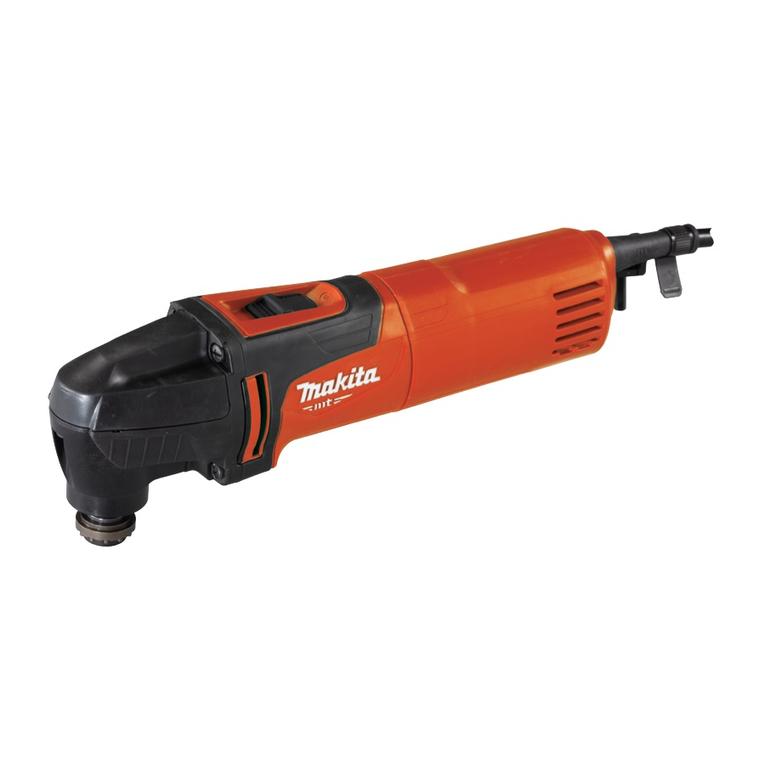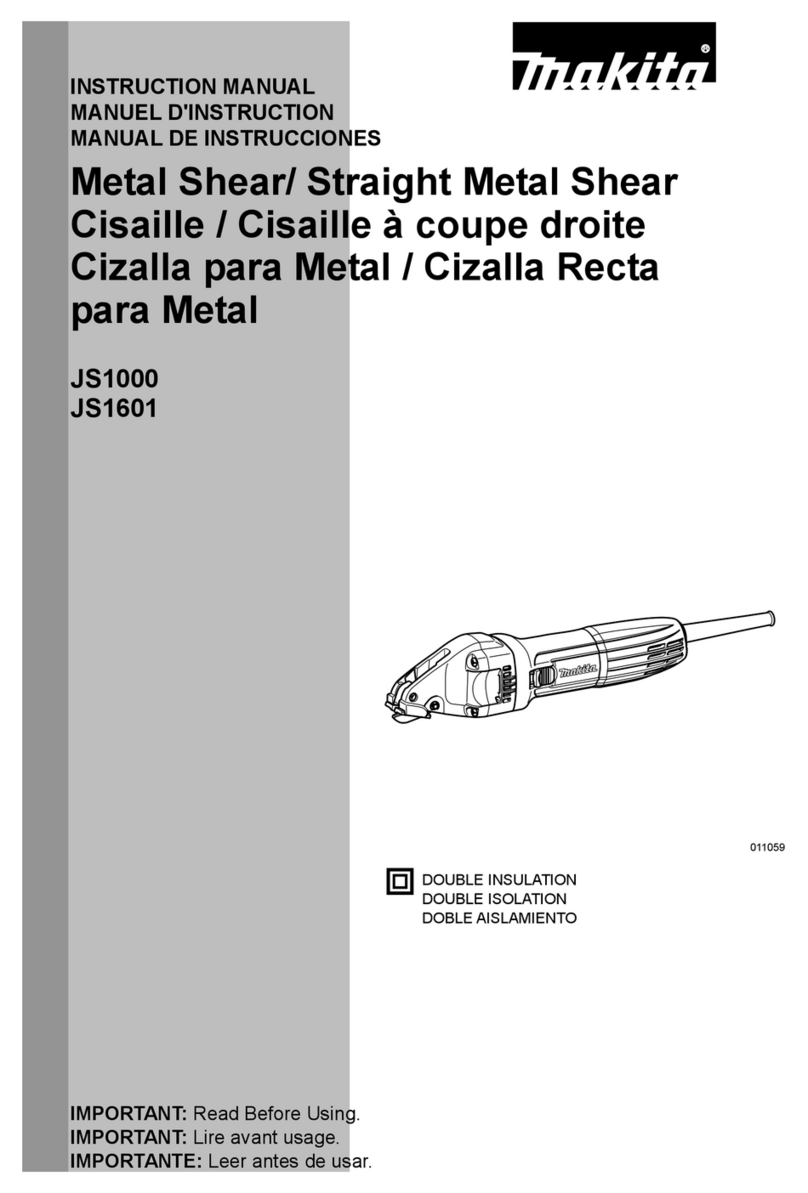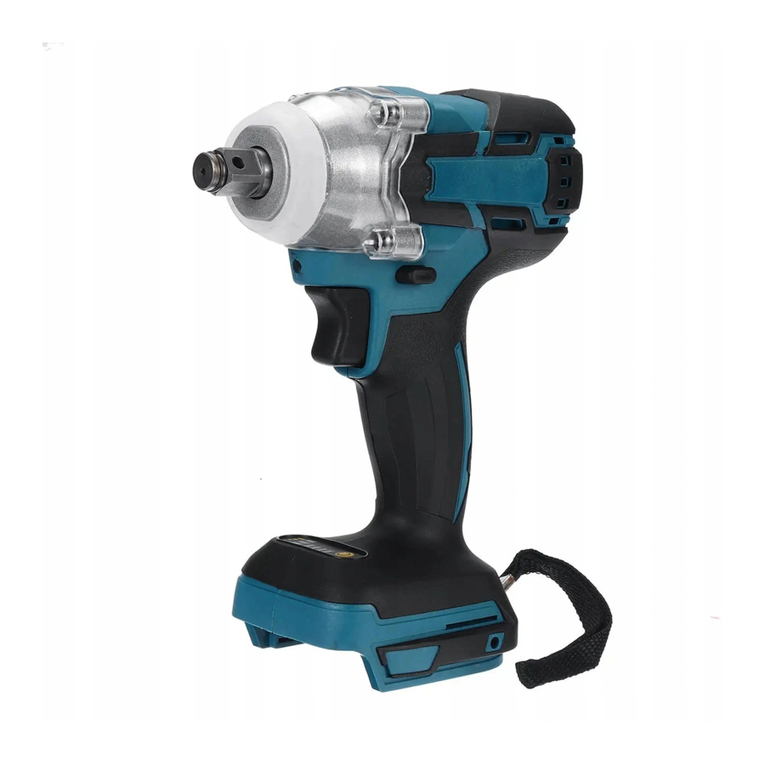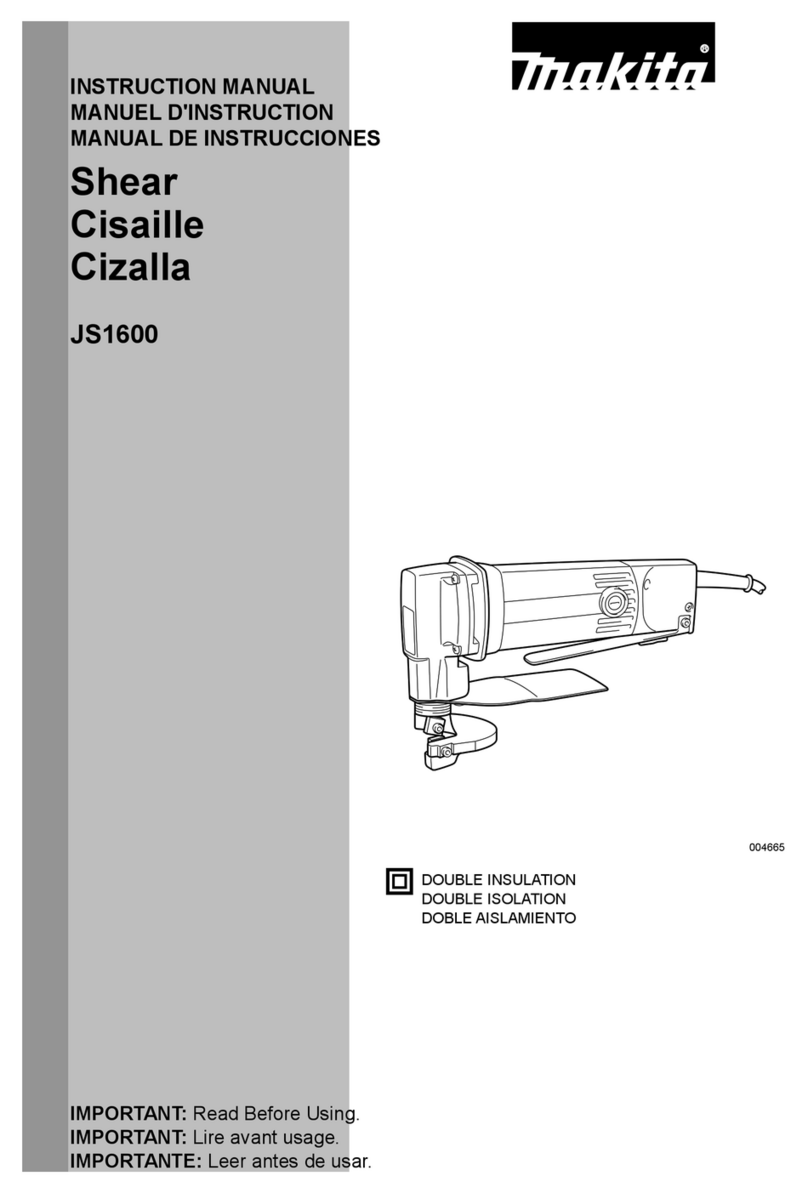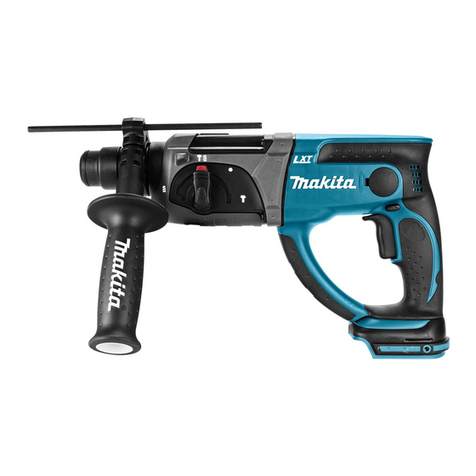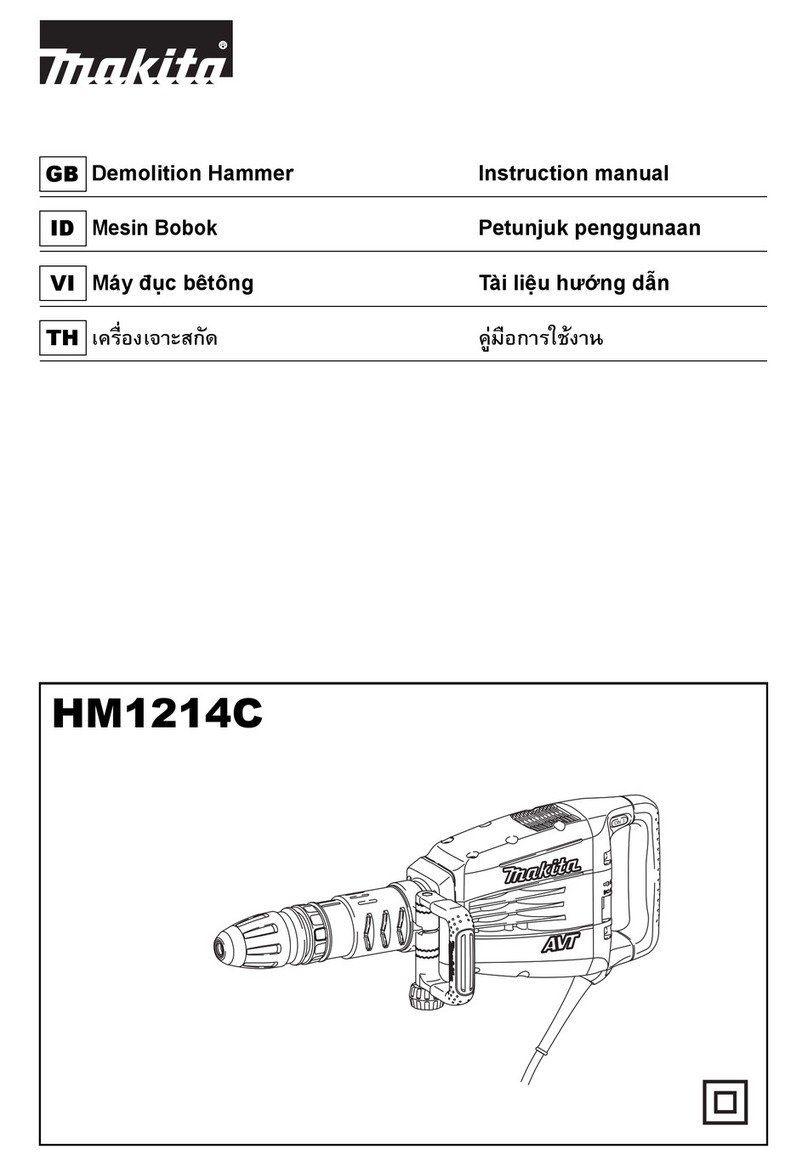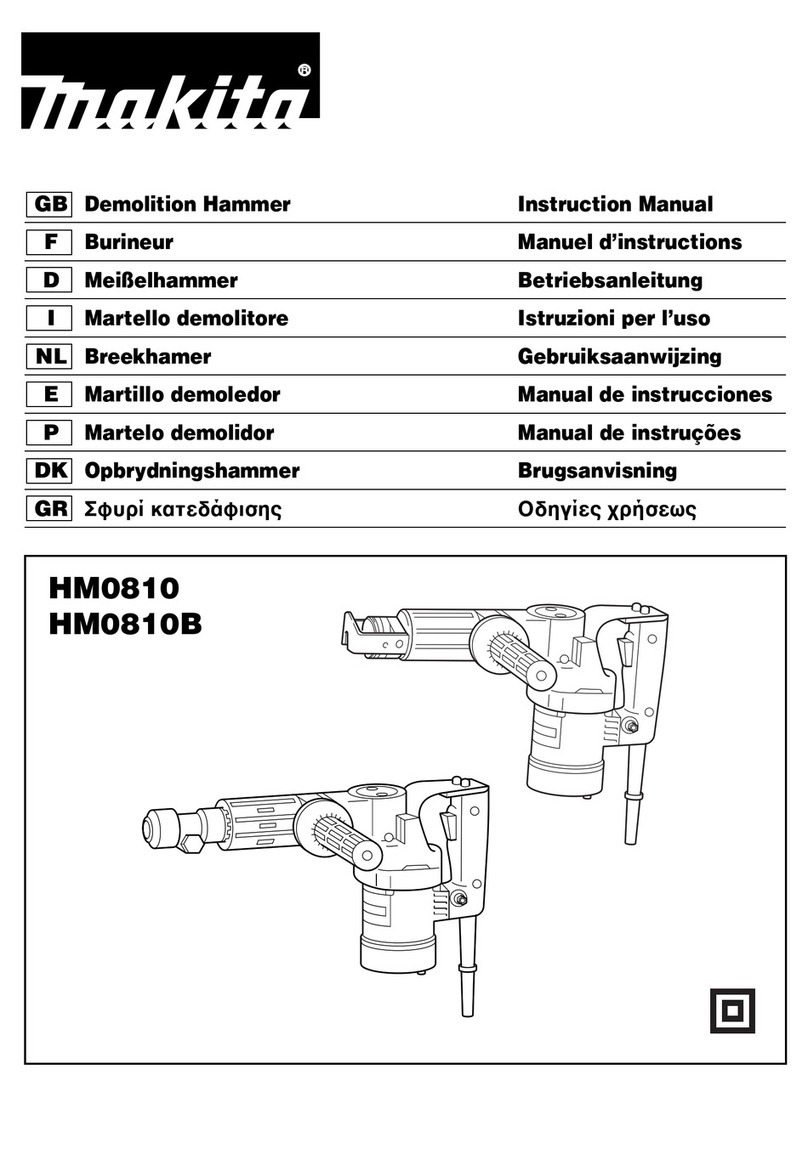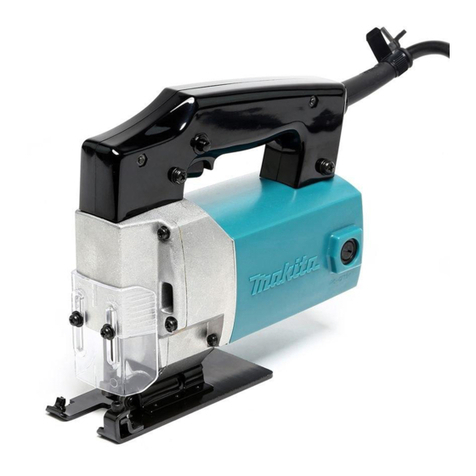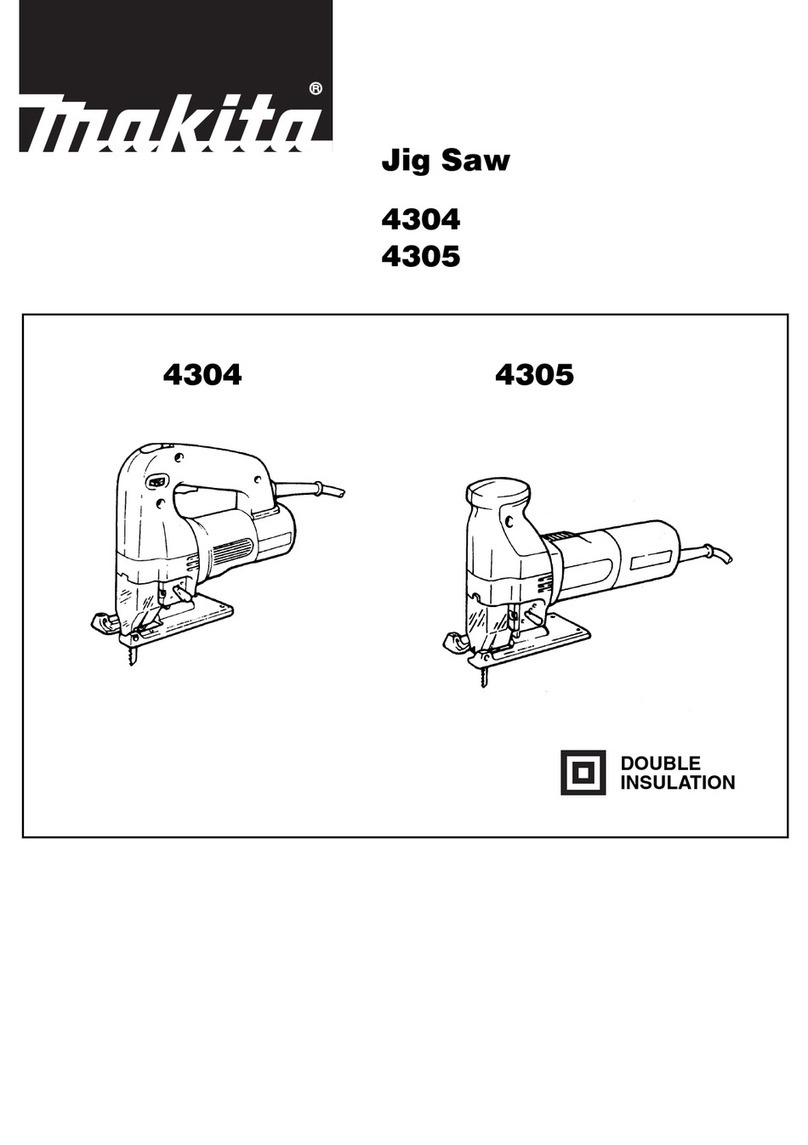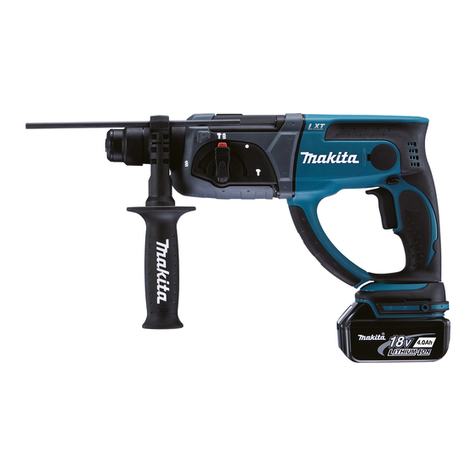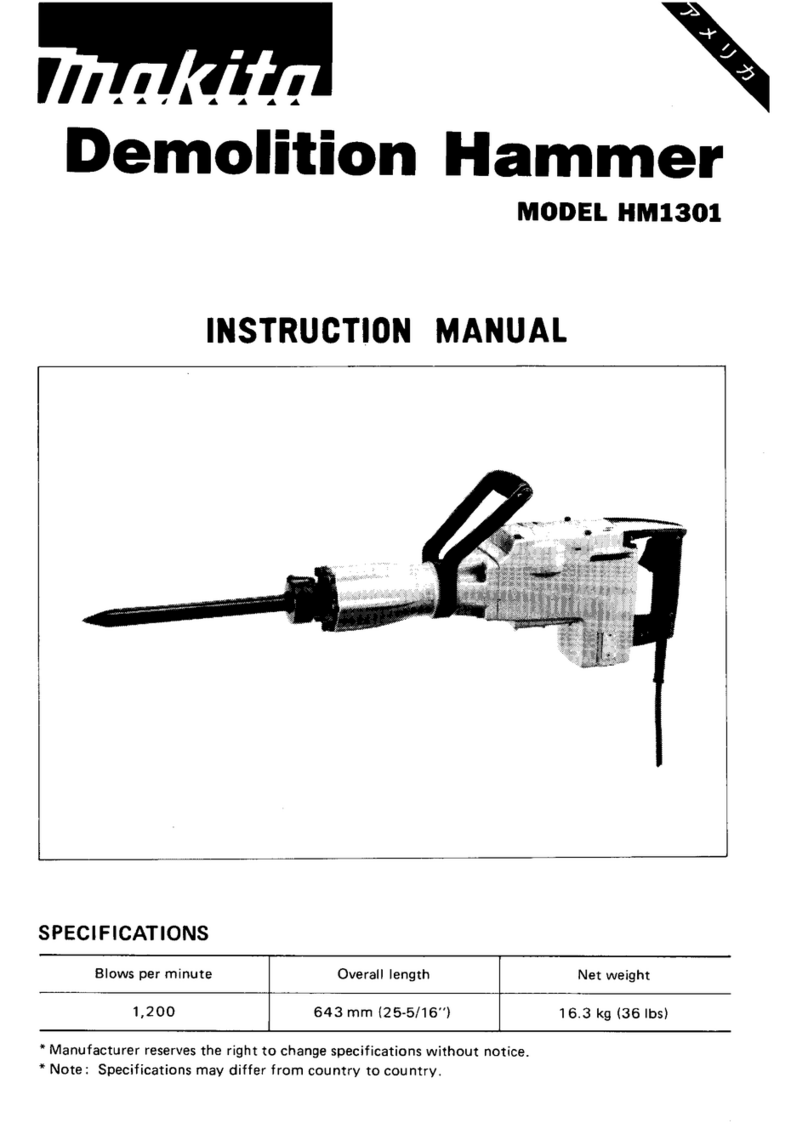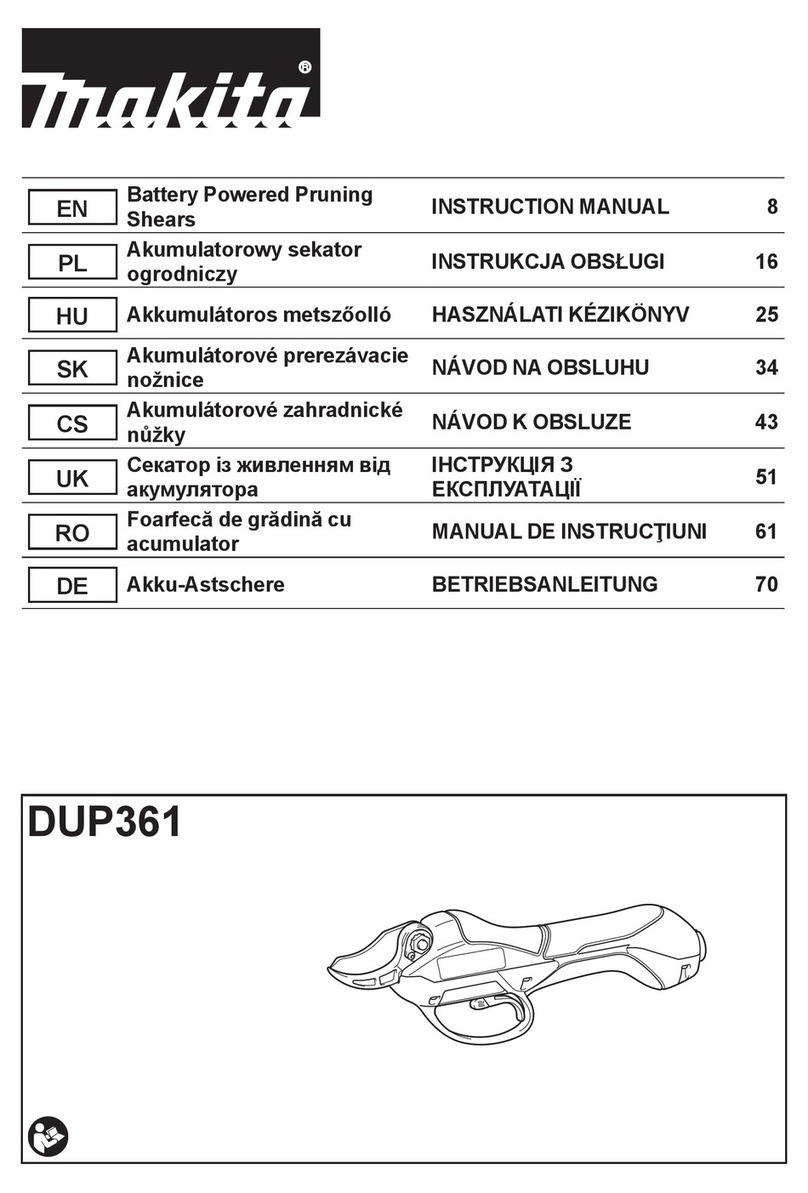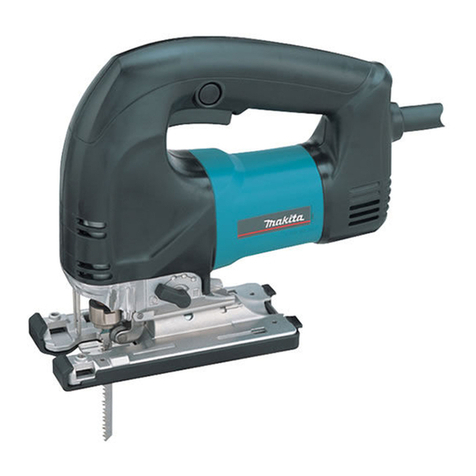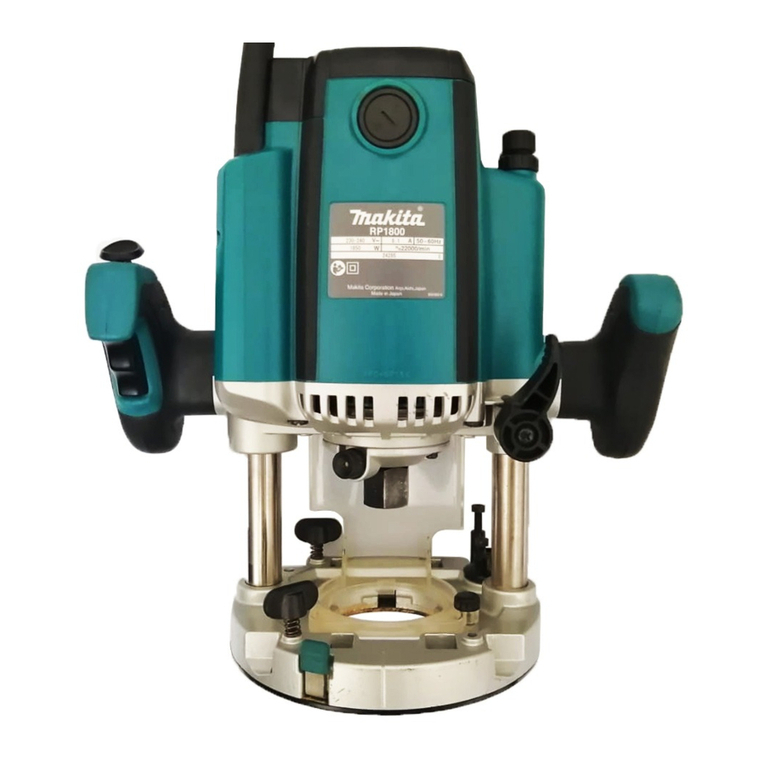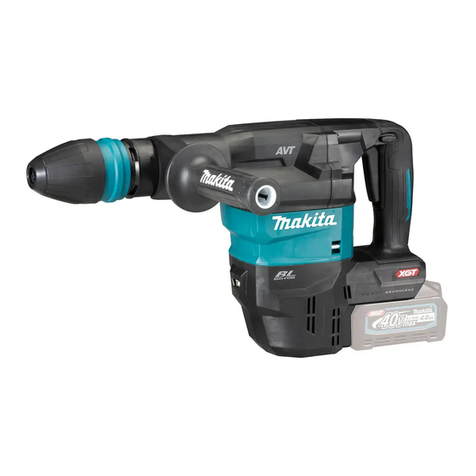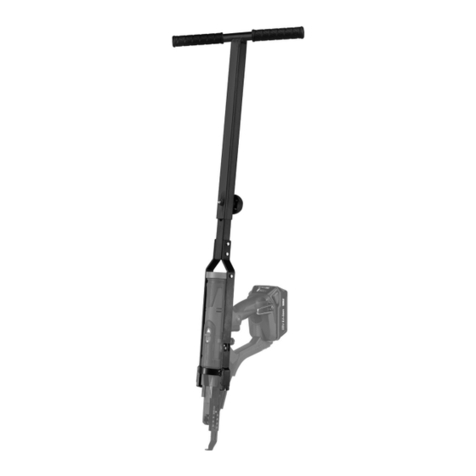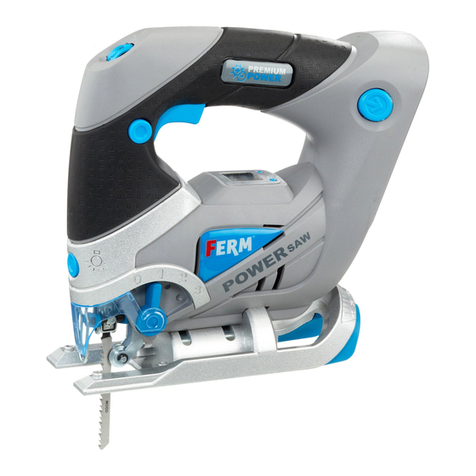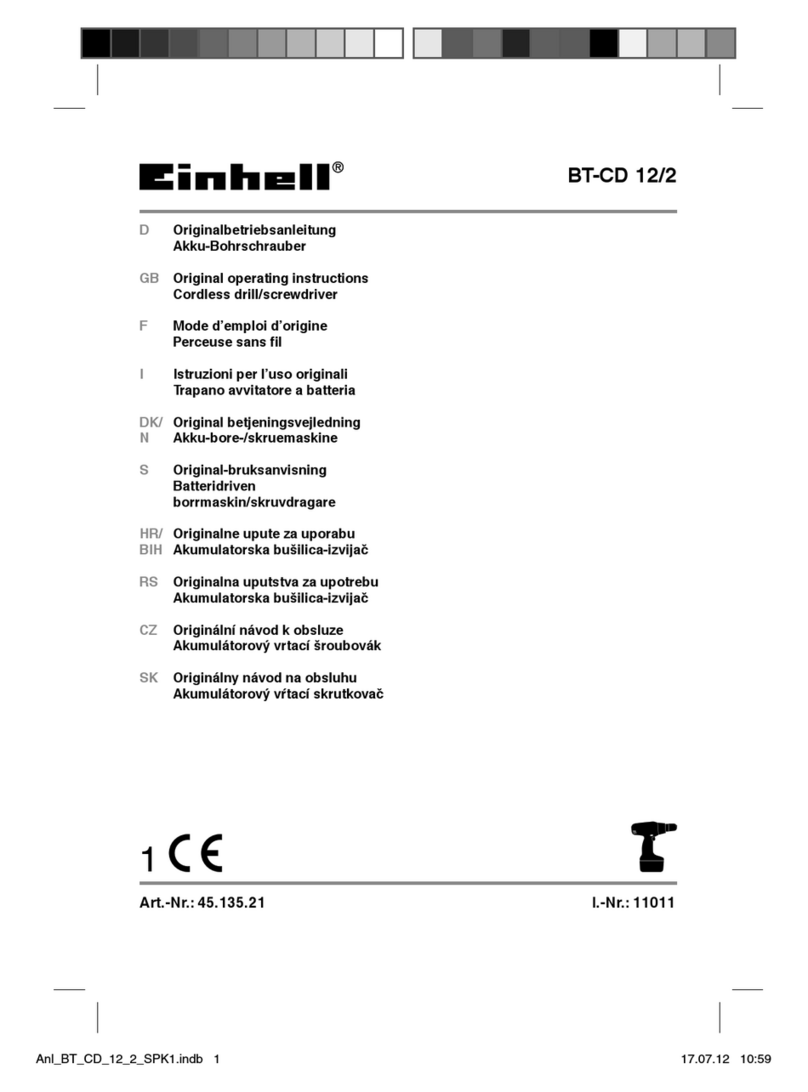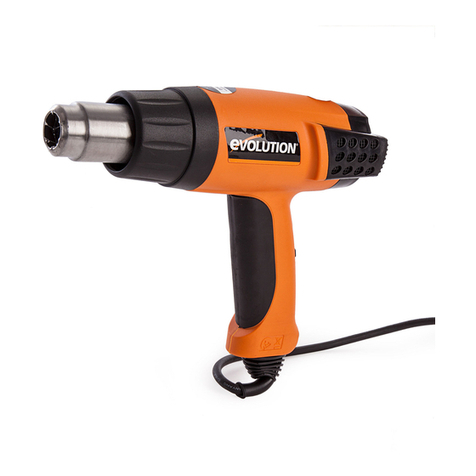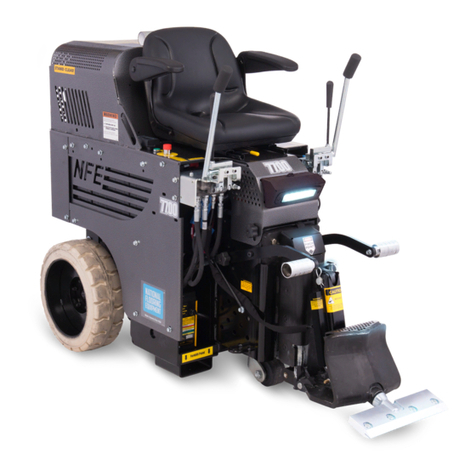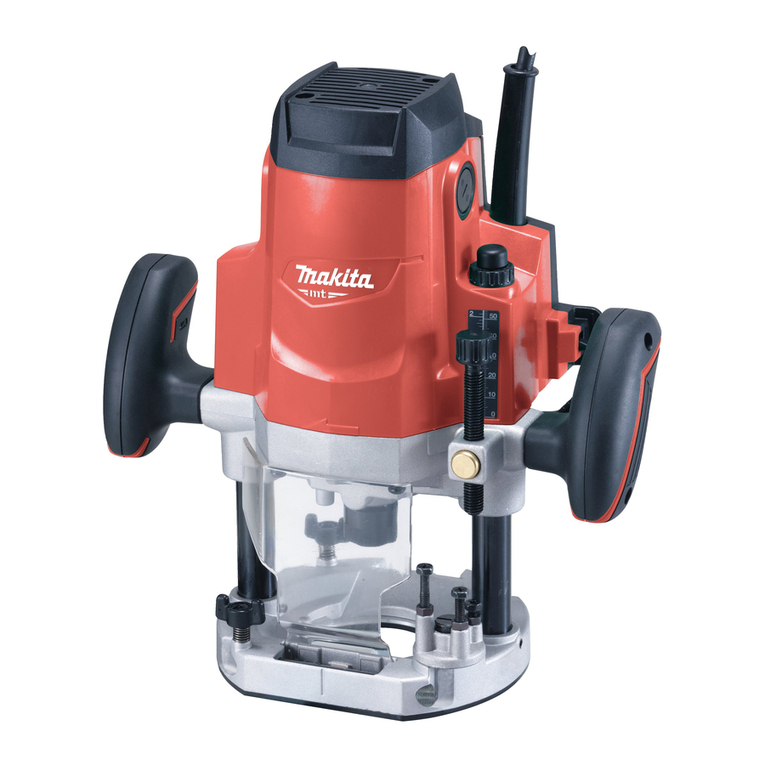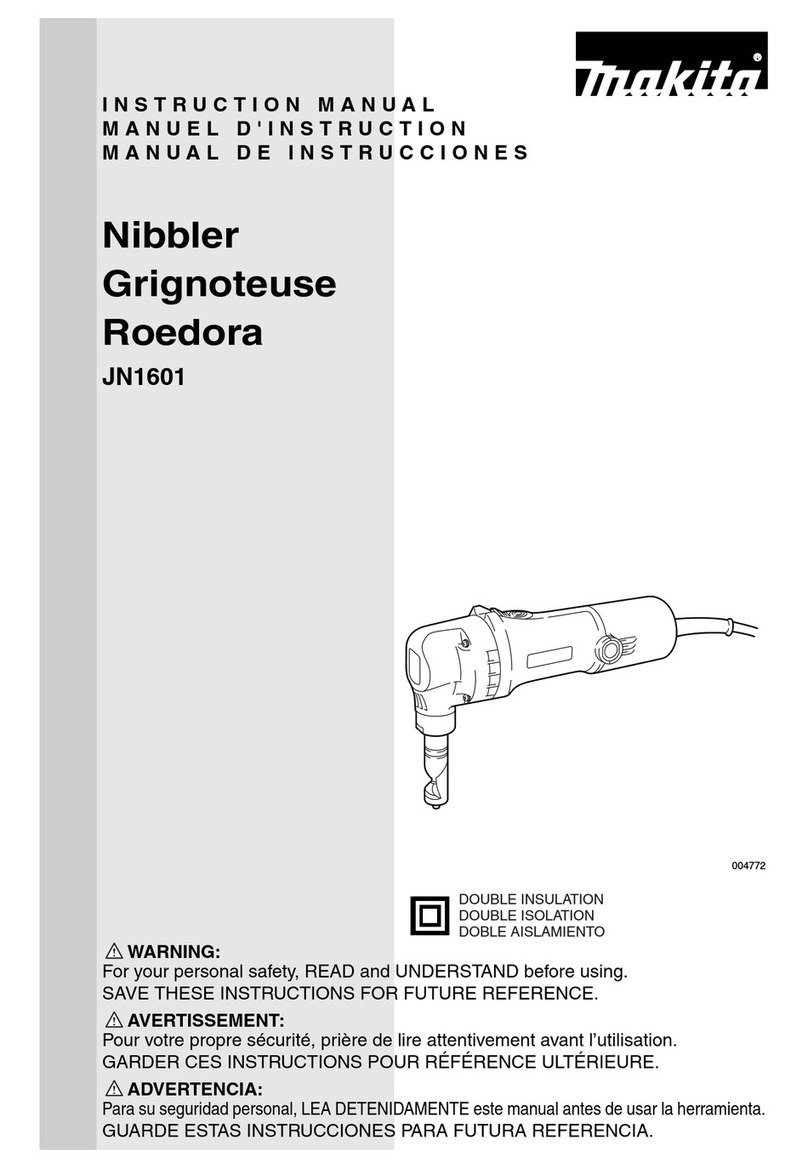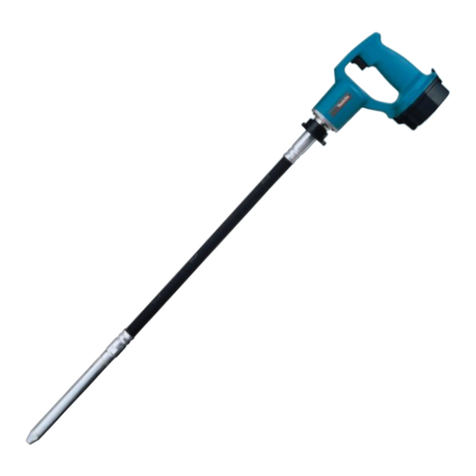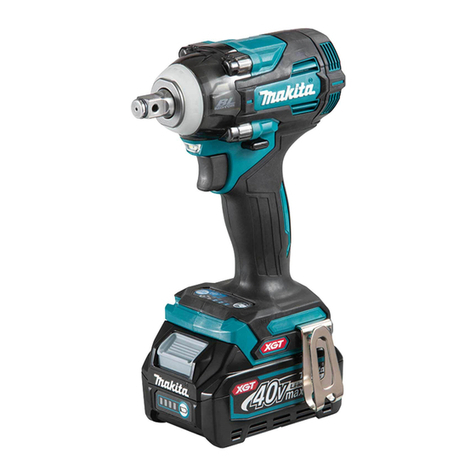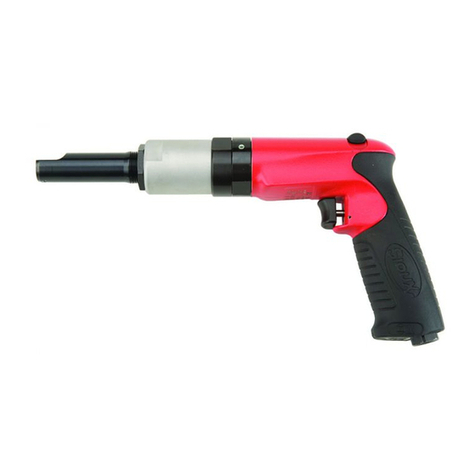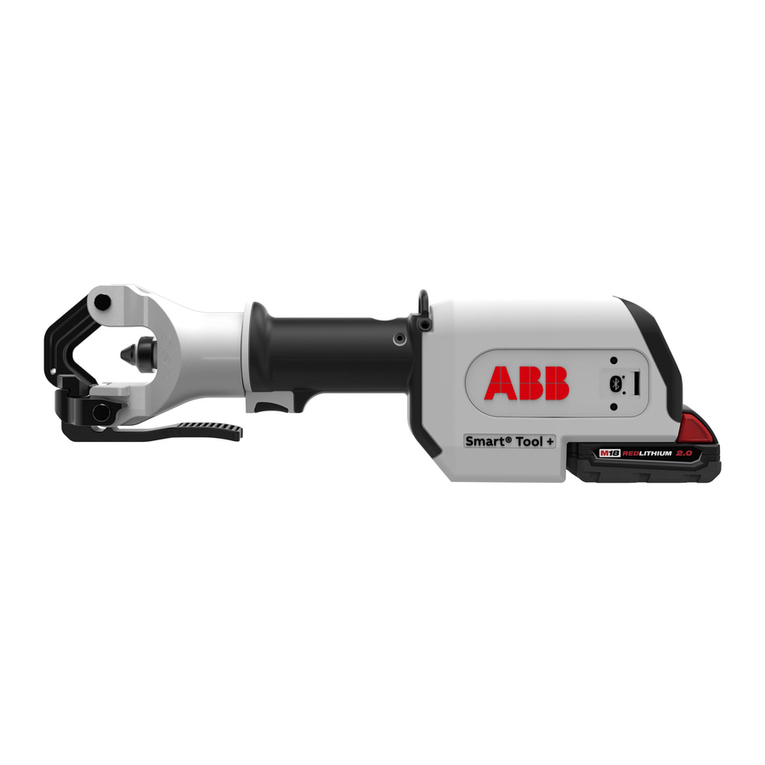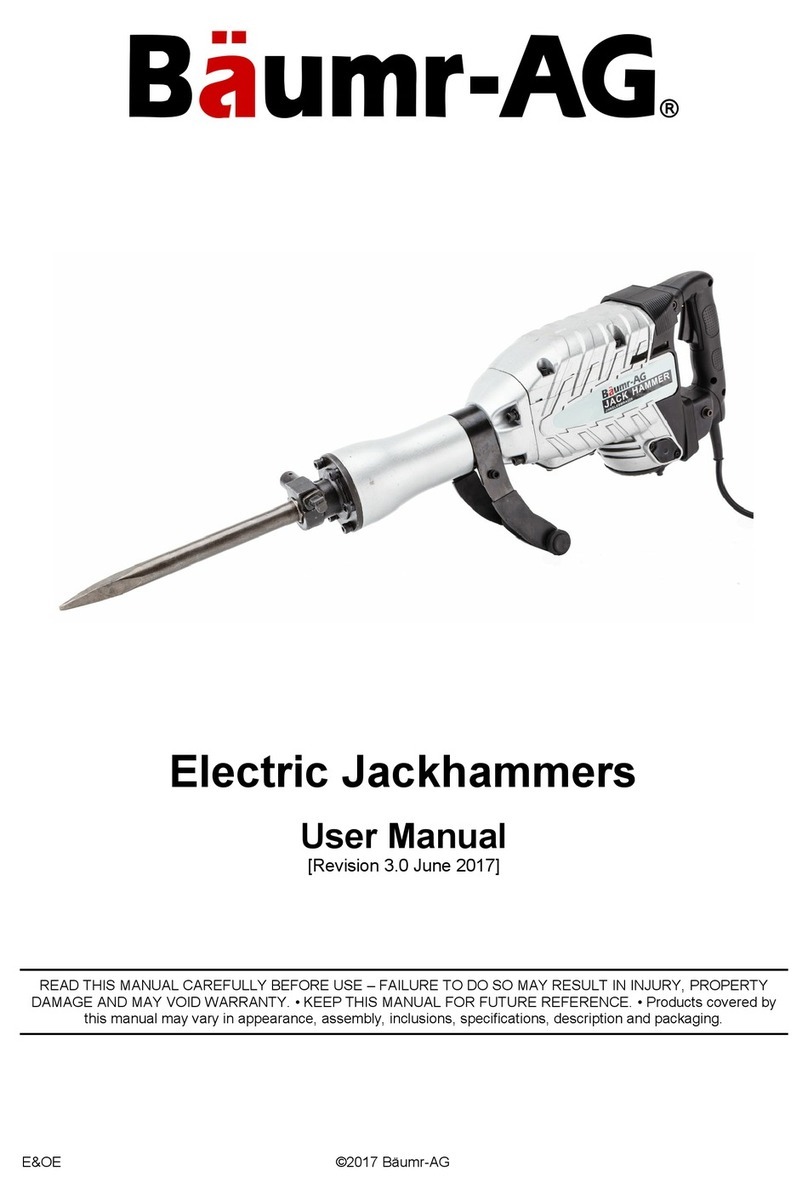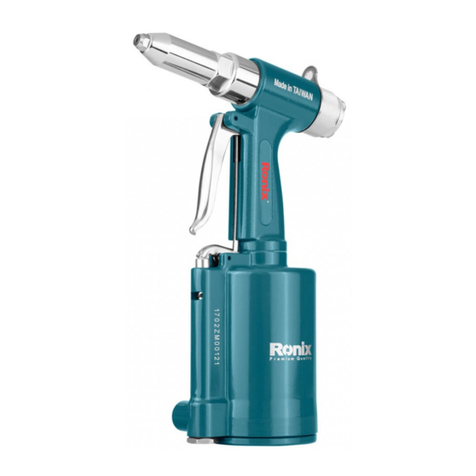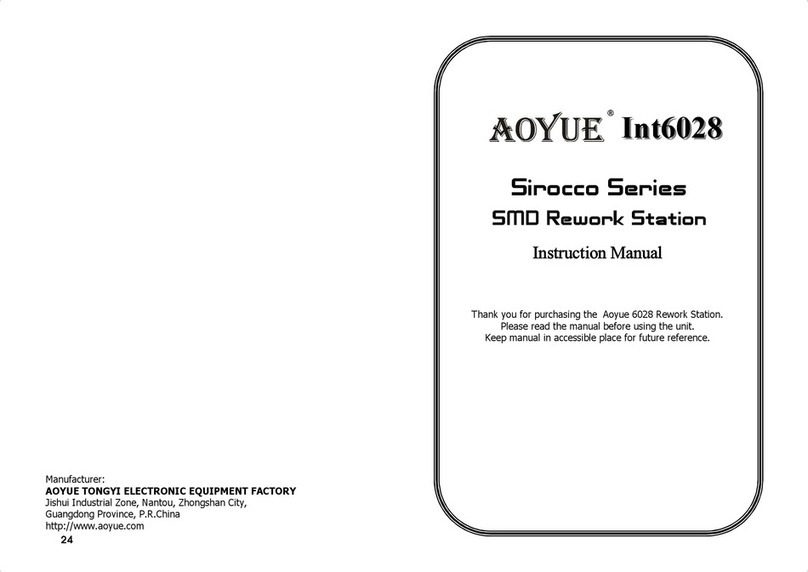16
8. Probeer geen wijzigingen aan te brengen of de
machine voor andere doeleinden te gebruiken.
9. Stel de machine nooit in werking zonder nietjes,
aangezien anders de gebruiksduur kan worden
verkort.
10. Stop onmiddellijk de machine, wanneer u merkt
dat er iets niet in orde is of iets ongewoons
optreedt.
11. Drijf geen nietjes in materiaal waar de nietjes er
doorheen kunnen schieten.
12. Stel nooit de trekschakelaar en de veilighei-
deshendel gelijktijdig in werking, tenzij u met het
eigenlijke werk wilt beginnen. Laat alleen het
werkstuk de nodige druk op de veiligheidshen-
del uitoefenen. De functje van de veiligheidshen-
del wordt ongedaan gemaakt, wanneer de
hendel in de ingedrukte stand wordt vastgezet of
met de hand wordt ingedrukt.
13. Breng geen wijzigingen aan de veiligheidshen-
del. Controleer de veiligheidshendel dikwijls op
mankementen.
BEWAAR DEZE VOORSCHRIFTEN.
BEDIENINGSVOORSCHRIFTEN
Plaatsen en uithalen van batterij (Fig. 1)
• Schakel de machine altijd uit voordat een batterij
geplaatst of verwijdert wordt.
• Om het batterijpak te verwijderen, trek eerst de sluit-
plaat uit de machine, pak dan het batterijpak aan beide
zijden vast en verwijder het uit de machine.
• Voor het plaatsen van de batterij zorgt u ervoor dat de
rug op de batterij in de groef van het batterijkomparti-
ment komt, waarna u de batterij naar binnen schuift.
Klap alvorens het gereedschap te gebruiken de stel-
plaat oftewel deksel weer dicht, kontroleer of de stel-
plaat goed vast geklemd zit en niet gemakkelijk
opengaat.
• Als het batterijpak moeilijk in de houder komt, probeer
het dan niet met geweld in te duwen. Indien het batterij-
pak er niet gemakkelijk ingaat, dan houdt u het ver-
keerd.
Veiligheidssysteem (Fig. 2)
Controleer of het veiligheidssysteem in orde is, alvorens
de machine in werking te stellen. De machine mag niet in
bedrijf worden gesteld, wanneer alleen de trekschakelaar
wordt ingedrukt, of alleen de veiligheidshendel tegen het
werkstuk wordt gedrukt. De machine dient alleen in wer-
king te worden gesteld, wanneer beide handelingen wor-
den verricht. Veiligheidshalve dient u een proefje te
nemen met de machine (deze mag dan niet geladen wor-
den) ver van u of van eventuele omstanders af gericht.
OPMERKING:
De mogelijkheid bestaat dat de machine een ogenblikje
in werking treedt, wanneer alleen op de trekschakelaar
wordt gedrukt. Dit is echter geen defect. Wanneer dit
gebeurt, richt dan de machine ver van u of van de
omstanders af en laat de trekschakelaar los. Druk
daarna weer op de schakelaar om te controleren of het
veiligheidssysteem in orde is.
Laden van nietjes (Fig. 3, 4 en 5)
Belangrijk:
Verwijder altijd de accu alvorens nietjes in de machine te
laden.
Druk de plaatveer op de achterkant in en schuif de beu-
gel naar achter.
Laad de nietjes in het magazijn met de uiteinden naar
boven, zoals afgebeeld in Fig. 4. Schuif de beugel naar
voren.
Voor het vastzetten van de beugel, drukt u deze naar
voren terwijl u daarbij de veerplaat op de achterkant
indrukt.
LET OP:
• Zet de beugel altijd vast, aangezien de nietjes anders
eruit kunnen vallen en moeilijkheden kunnen veroorza-
ken.
• Wanneer het magazijn is geladen en u houdt de
machine naar beneden gericht met loszittende beugel,
dan kunnen de nietjes eruit vallen en gevaar opleveren
voor de aanwezigen beneden. Denk hier speciaal aan,
wanneer u op hooggelegen plaatsen werkt.
Diepte-instelling (Fig. 6 en 7)
Ingeval de nietjes te diep of niet diep genoeg worden
ingedreven, dient de diepteinstelmoer op de bodem van
de machine te worden bijgesteld. Draai de moer naar
rechts om voor dieper indrijven van de nietjes en naar
links voor minder diep indrijven van de nietjes. Gelieve op
te merken dat de moer telkens een halve slag (180°)
dient te worden omgedraaid, zodat de groef op de moer
parallel blijft lopen met het magazijn.
OPMERKING:
Wanneer de afstand tussen het uiteinde van de machine
(A) en het vast te hechten materiaal meer dan 2 mm
bedraagt, kan de machine niet in werking worden
gesteld, aangezien de veiligheidshendel dan niet vol-
doende wordt ingedrukt.
Indrijven van de nietjes (Fig. 8 en 9)
Plaats de machine zodanig op het vast te hechten mate-
riaal, dat ze vlak op het materiaal rust. Zorg dat de
machine niet naar rechts of naar links helt. Houd de
machine stevig tegen het materiaal aangedrukt en druk
vervolgens de trekschakelaar in voor het indrijven van de
nietjes.
Wanneer de nietjes niet diep genoeg worden ingedreven
dient u op de voorkant van de machine te drukken, zoals
in Fig. 9 is afgebeeld, om vervolgens de nietjes in te drij-
ven.
Leidt dit nog niet tot het gewenste resultaat, dan dient de
instelmoer naar rechts to worden omgedraaid. Zie “Diep-
teinstelling”.
LET OP:
Stel de machine niet in werking zonder nietjes. Dit ver-
kort de gebruiksduur van de machine.
Raakt een nietje klem, doe dan als volgt. Verwijder eerst
de accu. Schuif de beugel naar achter en verwijder het
klemgeraakte nietje met een schroevedraaier of iets der-
gelijks.

